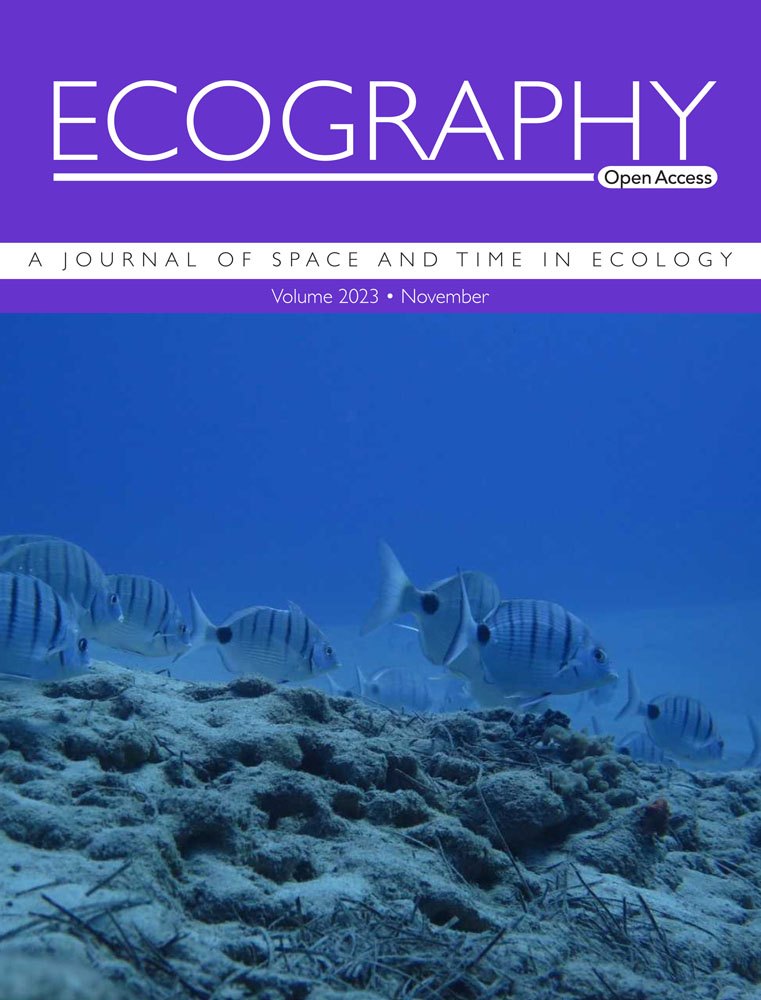Habitat heterogeneity overrides local processes to drive the species–area relationship of benthic macroinvertebrates in shallow floodplain lakes
IF 5.4
1区 环境科学与生态学
Q1 BIODIVERSITY CONSERVATION
引用次数: 0
Abstract
The species–area relationship (SAR) on islands describes how the numbers of species increase with increasing island size (or island‐like habitat, such as lakes). Despite its conceptual importance, there is considerable uncertainty surrounding its shape in freshwater lakes, as well as the potential mechanisms that underlie the SAR. Here, we used standardized sampling data of benthic macroinvertebrates from 81 shallow lakes in the Yangtze–Huai floodplain of China to evaluate its shape and disentangle several mechanisms (e.g. passive sampling, colonization‐extinction dynamics and heterogeneity) underlying the SAR. At the whole‐lake level, we found an increase in the total species richness with increasing lake area, as well as an increase in rarefied richness controlling for sampling effort. However, within single samples, diversity was negatively related to lake area. This scale‐dependence is because within‐lake β‐diversity increased with lake area, suggesting that heterogeneity overrides local processes to generate the positive SAR. These patterns were only evident for measures of diversity that equally weigh common and rare species (i.e. species richness), and disappeared when diversity measures that weigh common species more heavily were used. This suggests that the influence of heterogeneity on the SAR was largely via its influence on rarer species and their turnover in larger lakes. Overall, our result that heterogeneity was the primary driver of the positive SAR in this system provides an important baseline for making predictions about biodiversity changes with ongoing habitat loss.浅水漫滩湖泊底栖大型无脊椎动物的物种-区域关系受生境异质性的影响
岛屿上的物种-面积关系(SAR)描述了物种数量如何随着岛屿大小(或类似岛屿的栖息地,如湖泊)的增加而增加。尽管它在概念上很重要,但围绕其在淡水湖中的形状以及构成SAR的潜在机制存在相当大的不确定性。在这里,我们使用了来自中国长江-淮河漫滩81个浅湖的底栖大型无脊椎动物的标准化采样数据来评估其形状,并阐明了SAR的几种机制(例如被动采样、定域-灭绝动力学和异质性)。总体物种丰富度随湖泊面积的增加而增加,稀薄丰富度随采样努力的增加而增加。在单个样本内,多样性与湖泊面积呈负相关。这种尺度依赖性是因为湖内的β多样性随着湖泊面积的增加而增加,这表明异质性超越了局部过程,产生了正的SAR。这些模式仅在同等权重的常见物种和稀有物种(即物种丰富度)的多样性测量中才明显,而当使用更重权重的常见物种多样性测量时则消失。这表明异质性对SAR的影响主要是通过其对大型湖泊中稀有物种及其周转的影响。总体而言,异质性是该系统正SAR的主要驱动因素,这一结果为预测持续栖息地丧失的生物多样性变化提供了重要的基线。
本文章由计算机程序翻译,如有差异,请以英文原文为准。
求助全文
约1分钟内获得全文
求助全文
来源期刊

Ecography
环境科学-生态学
CiteScore
11.60
自引率
3.40%
发文量
122
审稿时长
8-16 weeks
期刊介绍:
ECOGRAPHY publishes exciting, novel, and important articles that significantly advance understanding of ecological or biodiversity patterns in space or time. Papers focusing on conservation or restoration are welcomed, provided they are anchored in ecological theory and convey a general message that goes beyond a single case study. We encourage papers that seek advancing the field through the development and testing of theory or methodology, or by proposing new tools for analysis or interpretation of ecological phenomena. Manuscripts are expected to address general principles in ecology, though they may do so using a specific model system if they adequately frame the problem relative to a generalized ecological question or problem.
Purely descriptive papers are considered only if breaking new ground and/or describing patterns seldom explored. Studies focused on a single species or single location are generally discouraged unless they make a significant contribution to advancing general theory or understanding of biodiversity patterns and processes. Manuscripts merely confirming or marginally extending results of previous work are unlikely to be considered in Ecography.
Papers are judged by virtue of their originality, appeal to general interest, and their contribution to new developments in studies of spatial and temporal ecological patterns. There are no biases with regard to taxon, biome, or biogeographical area.
 求助内容:
求助内容: 应助结果提醒方式:
应助结果提醒方式:


